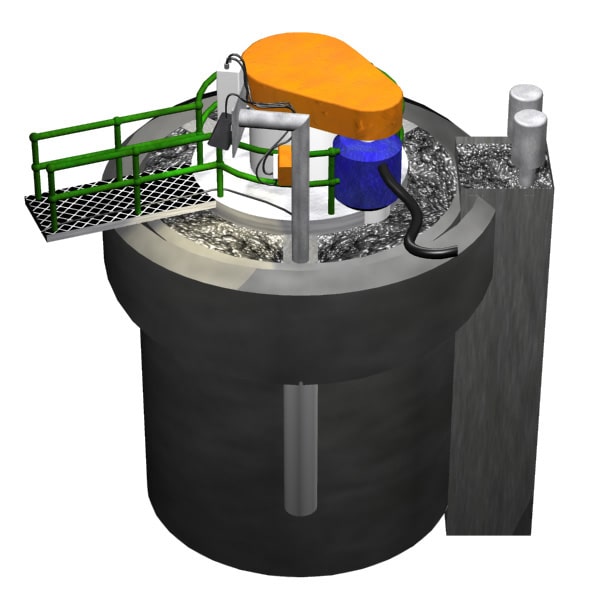Choose a different country or region to see the content specific to your location
Select Your Country/Region
Current Region:
 Global (EN)
Global (EN)
Choose a different country or region to see the content specific to your location
Current Region:
 Global (EN)
Global (EN)
How can we help you?
HOFFMAN & LAMSON multistage centrifugal blowers are custom made and designed to deliver a specific airflow and pressure. Thus, offering a very efficient way to produce constant forced air with equipment known for its reliability and dependable performance.
Select the below product cards to learn how our solutions are right for your froth flotation process requirements.
Froth flotation, also called ore flotation when used in mining applications, is a method for physically separating particles by having air bubbles that selectively adhere to specific surfaces. The particles with attached air bubbles are carried to the surface and removed.
Froth flotation is one of the most widely used methods for ore beneficiation. It is also used for wastewater treatment (where it is called Dissolved Air Flotation, or DAF) and in the deinking step of paper recycling. The following information focuses on mining, but the principles are the same.
In the mining industry, the plants where flotation is performed are generally known as concentrators or mills. The ore is ground and crushed into small particles and then mixed with water to form a slurry. The desired mineral is then made hydrophobic by the addition of a surfactant or a collector chemical (although some mineral surfaces are naturally hydrophobic). The particular chemical depends on the nature of the mineral to be recovered and, perhaps, the nature of those that are not wanted.
This slurry (called pulp) of hydrophobic particles and hydrophilic particles is introduced to flotation cell tanks that are aerated to produce bubbles. The hydrophobic particles attach to the air bubbles, which rise to the surface, forming a froth. The froth is removed from the cell, producing a concentrate of the target mineral.
Froth flotation efficiency is determined by a series of probabilities like those of particle-bubble contact, particle bubble attachment, transport between the pulp and the froth, and froth collection into the product launder. In a conventional mechanically-agitated cell, the volume occupied by air bubbles is low (5-10%), and the bubble size is usually greater than 1 mm. This results in a relatively low interfacial area and a low probability of particle bubble contact. Consequently, several cells in series are required to increase the particle residence time, thus increasing the probability of contact.
There are three stages an ore goes through to maximize product recovery.
1. Roughing - this produces a rougher concentrate. The objective is to remove the maximum amount of the valuable mineral at the coarsest particle size practical. In some concentrators, there may be a pre-flotation step that precedes roughing. This is done when there are some undesirable materials present, such as organic carbon that readily float.

2. Cleaning - The rougher concentrate goes through further stages of flotation to reject more of the undesirable minerals that ended up in the froth. The product of cleaning is known as the leaner concentrate or the final concentrate. The objective is to produce the highest concentrate grade possible.
3. Scavenging - The roughing flotation step is often followed by a scavenger flotation step that is applied to the rougher tailings. The objective is to recover any of the target minerals that were not recovered during the initial roughing stage. The concentrate from the scavengers can be returned to the roughing feed for refloating or it may be followed by another scavenging step.
The minerals that do not float into the froth are referred to as the flotation tailings or flotation tails. These tailings may also be subjected to further stages of flotation to recover the valuable particles that did not float the first time. The final tailings are normally disposed of as mine is filled or sent to tailings disposal facilities for long term storage.
Hoffman & Lamson is recognized around the world as a leading global provider of blower/exhauster solutions for general industrial applications.
For over a century, our customers have trusted the quality performance that our industrial air or gas blowers provide. Our priority continues to be unparalleled responsiveness to meeting our customer’s needs. Our unwavering commitment to engineering innovative product designs and quality manufacturing is evident with over 100,000 multistage centrifugal blowers/exhausters installed worldwide.
Hoffman & Lamson has a strong reputation as a global leader of engineered solutions and producing premier quality products efficiently and economically. Trust Hoffman & Lamson for the quality, reliability, and performance you expect and your operation demands.
ABOUT Hoffman™ and Lamson™
Hoffman™ and Lamson™ brands of centrifugal blowers and exhausters are among the many compressed air and gas technologies manufactured by Gardner Denver Inc.
Part of the Nash Division, they are American originals. Hoffman™ and Lamson™ brands have been setting industry standards for excellence, reliability, and customer satisfaction for over 100 years. Lamson, established in 1880, and Hoffman, in 1905, are brands customers know and continue to trust.